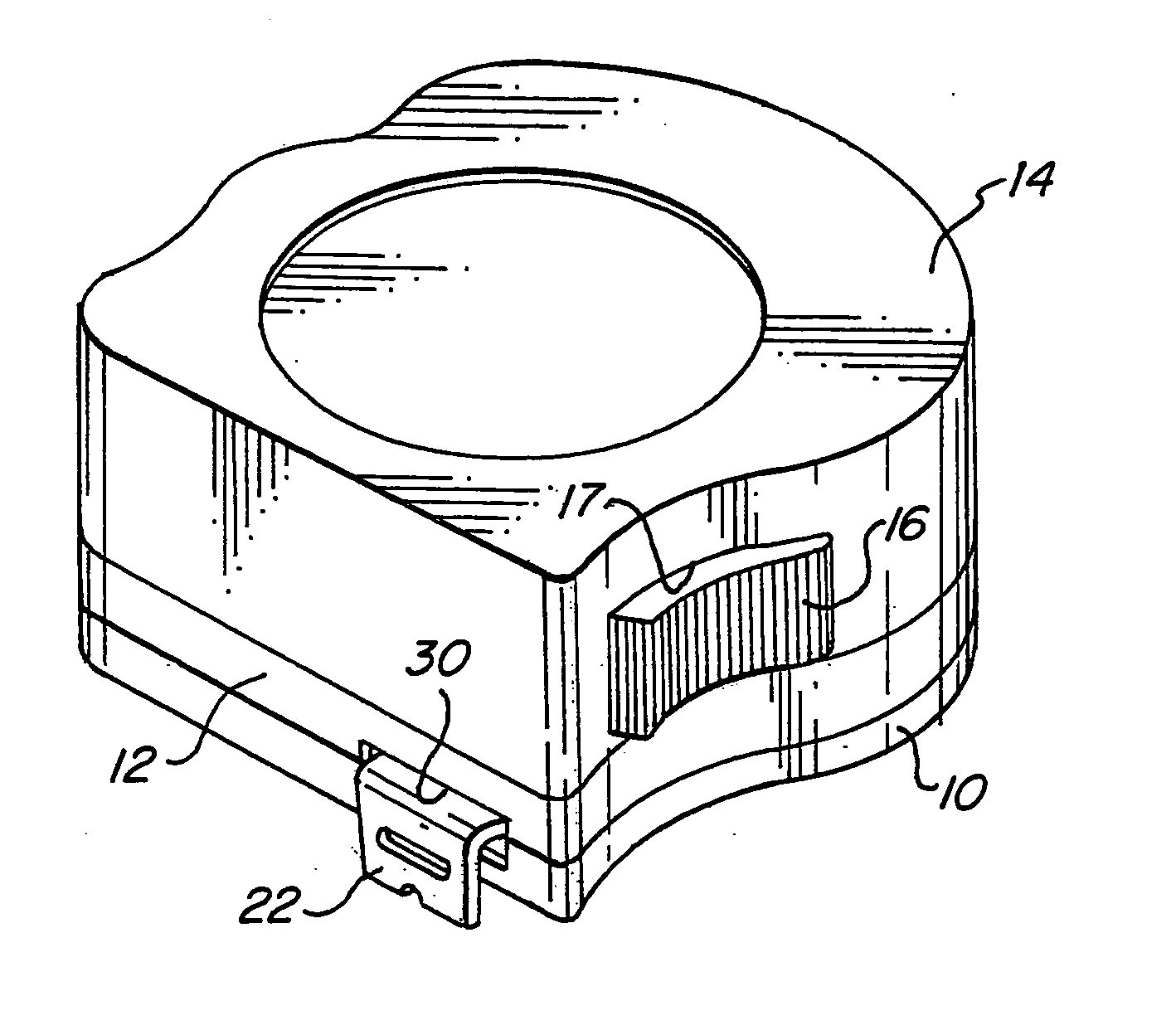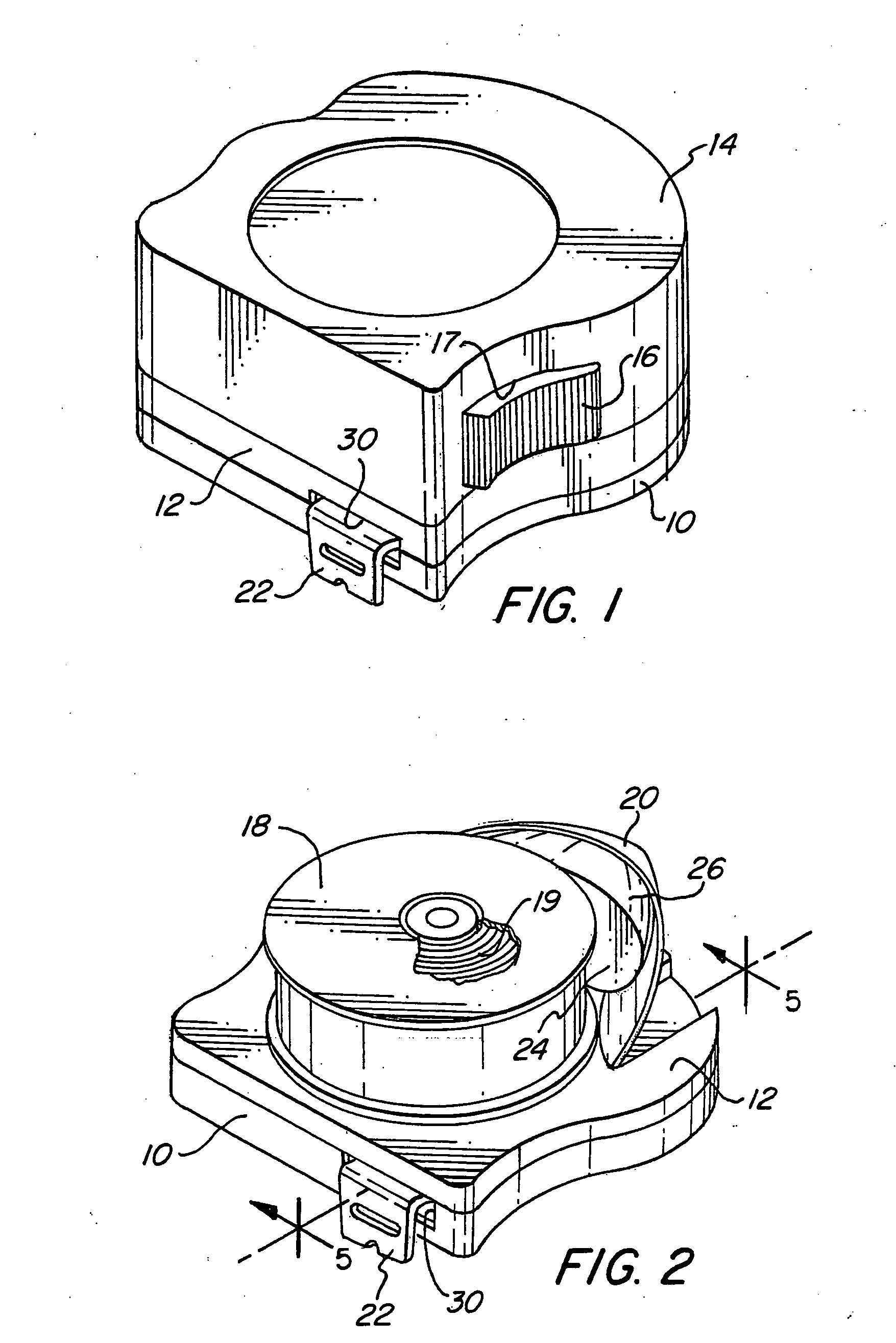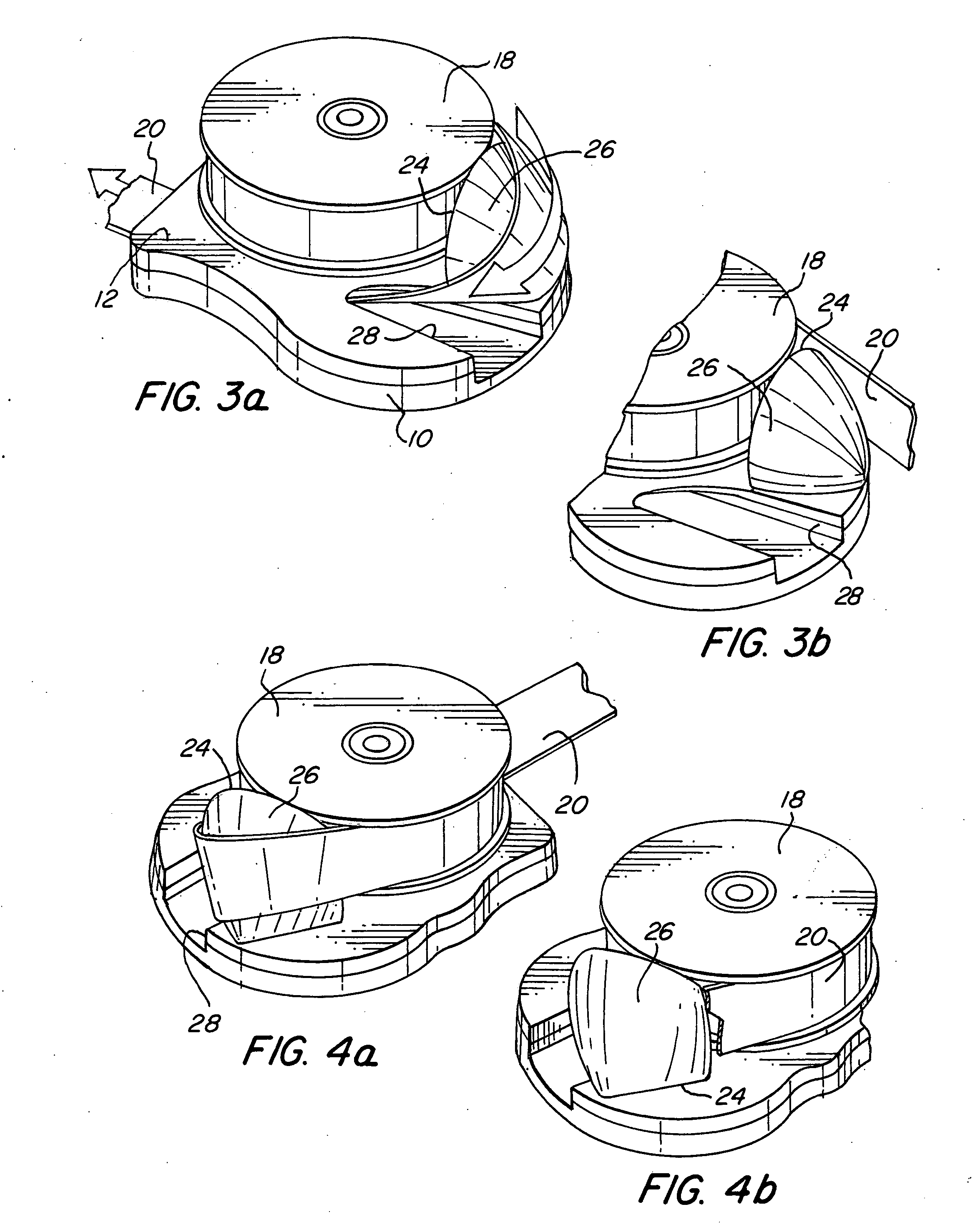Tape rule having reoriented measuring blade
- Summary
- Abstract
- Description
- Claims
- Application Information
AI Technical Summary
Benefits of technology
Problems solved by technology
Method used
Image
Examples
Embodiment Construction
[0018] Turning initially to FIGS. 1 through 5 of the drawings, therein illustrated is a first form of coilable tape rules embodying the present invention and consisting of a casing base, comprised of an outer wall 10 and an inner plate 12, and a casing cover 14. A slide 16 for operating the brake mechanism (not illustrated) projects through an opening 17 defined in the peripheral wall of the cover 14, which brake mechanism serves of course to maintain the blade 20 in selected positions of extension against the retractive force of the power-return spring 19, constantly applied to the spool 18 on which the blade 20 is wound. The blade 20 is of course of great length relative to its width dimension, taken with respect to which dimension it is of concavo-convex cross-sectional form, as is conventional; it also terminates in a standard engagement hook 22.
[0019] As is perhaps best seen in FIGS. 3 through 5 of the drawings, upon passage from the spool 18 the measuring blade 20 wraps parti...
PUM
 Login to View More
Login to View More Abstract
Description
Claims
Application Information
 Login to View More
Login to View More - R&D
- Intellectual Property
- Life Sciences
- Materials
- Tech Scout
- Unparalleled Data Quality
- Higher Quality Content
- 60% Fewer Hallucinations
Browse by: Latest US Patents, China's latest patents, Technical Efficacy Thesaurus, Application Domain, Technology Topic, Popular Technical Reports.
© 2025 PatSnap. All rights reserved.Legal|Privacy policy|Modern Slavery Act Transparency Statement|Sitemap|About US| Contact US: help@patsnap.com



